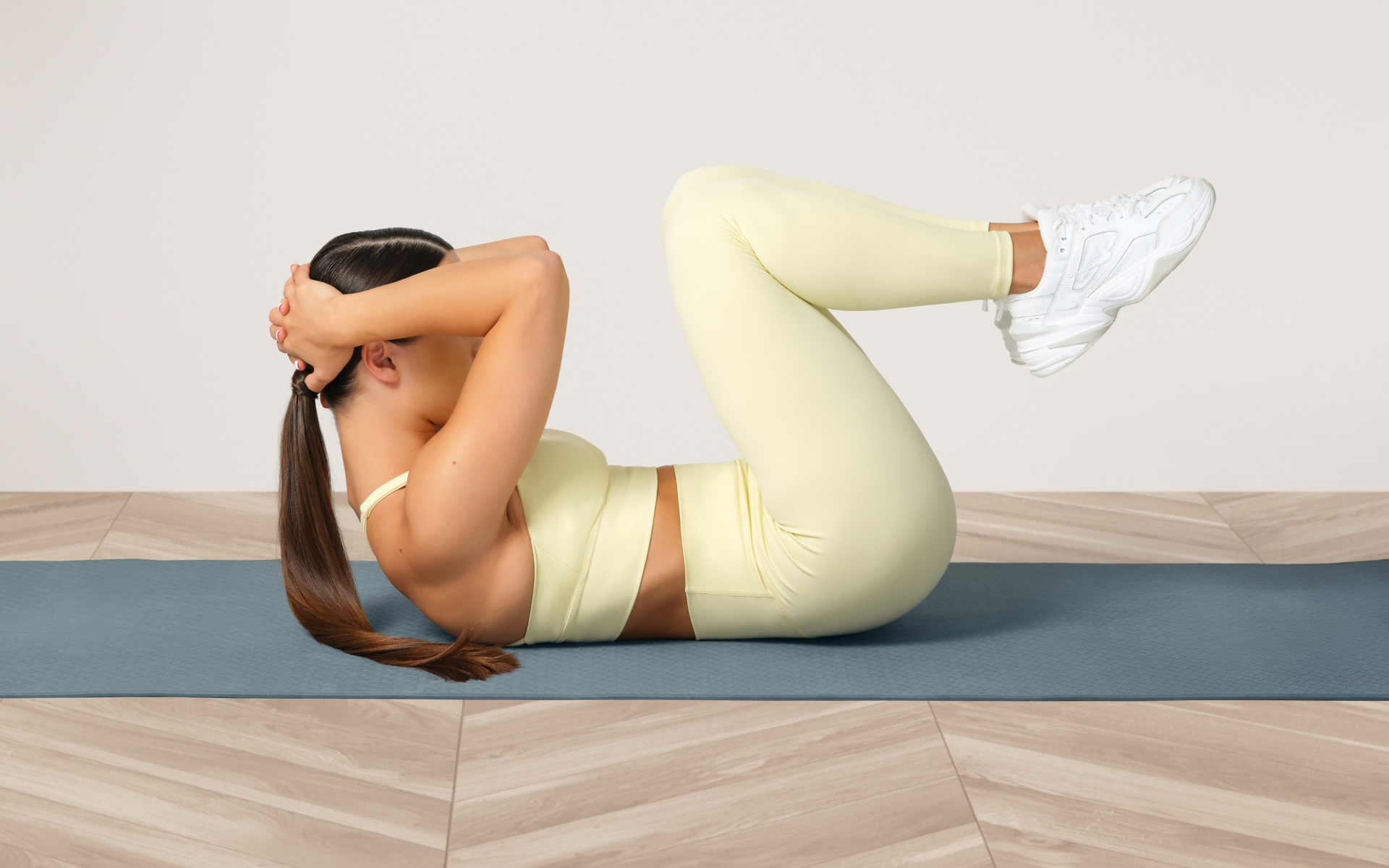Workout challenges, such as the push-up challenge, are a big part of the fitness community. Those who opt in to them do so for various reasons, such as targeting gains in a specific body part, to improve their physical and mental well-being, or to build their self-esteem and confidence.
A 100 push-ups a day challenge is among the most popular fitness challenges that beginners are likely to come across in their efforts to boost their fitness. But what will 100 push-ups a day do? We can imagine that it will help with the desired gains, but is there more to this challenge than we can see?
Read on to learn if there are benefits of doing push-ups every day and what side effects may affect you if you choose to engage in such a routine.
What Is the Impact Of Doing 100 Push-Ups a Day?
Doing 100 push-ups a day for a month or even a year will likely lead to increased upper-body strength and endurance.i In addition, you likely see increased muscle mass and definition in you upper body muscles including:
- Chest
- Shoulders
- Triceps
- Core
- Back muscles
However, this much exercise, particularly without ample rest, could lead to several issues including;
- Increased risk of injury from the overuse of muscles,
- Muscle imbalances in the upper and lower body
- Muscle growth plateau
- Various overtraining symptoms
This is why it’s essential to be smart about your training and ensure you’re capable. For more details about benefits of push ups everyday, take a look at our prior publication.
How Many Push-Ups to Get Ripped?
It’s common to think that doing a specific number of push-ups, e.g.,100 a day for a week, a month, or more, will lead to massive gains and a ripped physique.
Some may even claim that this is true – they’ll even have pictures or videos to support their claims. The bitter truth is that there is no specific number of push-ups that each individual needs to hit to help them get ripped.
Whether you’re looking to simply pep up your fitness routine, jazz up your diet with mouth-watering low-calorie recipes or want to get your act together and significantly drop that number on your scale – BetterMe: Health Coaching app has got you covered! Improve your body and revamp your life!
Something most people tend to forget is that muscle growth (or getting ripped) takes more than just exercise. Scientific research has shown that yes, exercise does help with getting ripped. Muscle hypertrophy occurs through several mechanisms, including:
- Mechanical tension
- Metabolic stress
- Muscle damage
- Training volume
- Intensity
However, other specific individual factors such as previous training status (i.e. whether you’re a beginner, intermediate, or advanced exerciser), age, sex, genetics, and daily protein intake all affect and can alter your final results (1).
Due to these incredibly individual factors, we cannot give you a specific number of push-ups to do per day and promise you that it will help you get ripped. However, a combination of exercise, a proper healthy and high-protein diet, consistency, patience, and ample rest after a workout session will help you achieve the desired results. Discover the science behind the push-up progression in one of our earlier articles.
Read more: Calisthenics for Skinny Guys: 8 Exercises to Build Muscle
Will 100 Push-Ups a Day Make a Difference?
Yes, doing 100 push-ups a day can help make a difference to your physique. However, the positives can also come with some negatives, depending on how often you do this exercise routine. Uncover the surprising benefits of push-ups for females in our past article.
Some of the positives you may encounter include:
-
Increased Muscle Strength and Mass
As previously mentioned, push-ups are an upper-body exercise that targets multiple muscles, particularly those in your chest, shoulders, triceps, core, and back. This helps you look more toned in the chest, arms, shoulders, and back, and can also make it easier to carry heavy things in your arms.
Increased muscle strength and mass is not just a push-up advantage for men. Several studies have shown and mentioned that while women may have stronger legs, their upper bodies are relatively weaker than men’s (2, 3, 4). One of the benefits of push-ups for females is increased strength, which can help improve their day-to-day activities such as lifting and carrying things, and general quality of life.
-
Increased Cardiovascular Fitness
Cardiovascular fitness refers to your body’s ability to efficiently deliver oxygen to your muscles during physical activity. This is tied to how healthy your heart and lungs are.
According to the National Heart, Lung, and Blood Institute, a healthy heart and lungs can pump and deliver blood throughout the body, which allows for more blood flow to your muscles and increased oxygen levels in the blood. A strong and healthy heart also reduces the risk of coronary heart disease and heart attack (5).
Research on both adults and children has shown that one of the benefits of performing push-ups is increased cardiovascular fitness, which helps improve the functional capacity of your cardiovascular system and lowers cardiovascular disease risk (6, 7).
-
Better Push-Up Technique
As a beginner, chances are that you will suck in the beginning. It may be difficult to do even five push-ups, let alone 100, and your technique/form won’t be the best. However, with time, effort, and consistency, by the time you can hit 30 or even 50 push-ups a day, your form will have greatly improved.
If you want to see some incredible changes through your 100 push-ups a day routine, we suggest a push-up progression plan. This is a type of progressive overload plan that challenges you through different variations of this exercise and gradually increases the difficulty to build strength and muscle mass.
That being said, such a routine can come with some disadvantages. Some that you may encounter include:
-
Overtraining Syndrome
This is a condition that occurs when you train too much and too often without allowing your body to rest. The stress of training overcomes your body’s ability to recover.
Overtraining symptoms can show up in multiple ways, including(8):
-
- Fatigue
- Depression and anxiety
- Loss of motivation
- Mental and mood changes
- Decrease in performance
- Sore or stiff muscles
-
Increased Risk of Injury
Overtrained muscles are weak muscles and weak muscles are more prone to injury. Some injuries that can come due to overused muscles from too many pushups without proper rest include:
- Rotator cuff issues
- Front delt issues
- Tricep tendonitis
- Tennis elbow
To avoid this, it could be best to limit the number of days you do push-up exercises. Instead of trying to complete a 100 push-ups every day for a year challenge, reduce this number to 100 push-ups a day once a week or three times a week at most.
This will allow your muscles to rest, repair, and grow, which gives you the desired results and avoids overtraining and the risk of injury.
In a study published in the Journal of Sports Sciences, researchers stated that muscle growth is largely dependent on how much you train, not how often you train, i.e. training volume over frequency (9).
For example, a person who does 100 push-ups a day once a week and another who does 100 push-ups three times a week will likely have the same results in muscle hypertrophy.
However, increasing the total volume of work done (training more days and doing more pushups total) will lead to better changes, but even then, the number is small (9). Therefore, instead of pushing your body beyond its limits in the hope of greater gains, choose the healthier route and do fewer workouts but remain consistent.
-
You May Experience A Muscle Growth Plateau
Plateaus in fitness are often brought up in conversations regarding weight loss, but they can happen in bodybuilding too. When you do 100 push-ups a day for 30 days or more, your body adapts to the strain of the exercise and this becomes its new normal.
Therefore, the changes you saw in the first few weeks will no longer happen. You’ll need to adjust your routine to overcome this. A push-up progression plan that incorporates progressive overload of the exercise is a good way to avoid and overcome this hurdle.
-
May Lead To Muscle Imbalances
Have you ever seen someone with a huge upper body and very thin legs? Or one larger bicep than the other? This is a physical manifestation of muscular imbalance and it happens when you train one muscle group or body part more often than you train the others.
Doing 100 push-ups a day could potentially leave you too exhausted to properly train other upper- and lower-body muscle groups. Furthermore, if you’re short on time, it may make you unable to train these other muscle groups altogether.
It should be noted that muscular imbalance is aesthetically unpleasant to look at and it can also lead to balance and posture issues, which affect your health.
Is 100 Push-Ups a Day Overtraining?
This depends on three factors:
-
- Frequency of the routine
- Body composition
- Level of fitness
- Frequency of the Routine
If you’re doing 100 push-ups every day (i.e. 7 days a week), then you’re at an increased risk of overtraining your muscles. Your body needs rest, or else you’re risking both your mental and physical health.
Instead of doing this routine 7 days a week, stick to once a week or thrice a week at most. As shown in the study mentioned above, increasing the number of times you exercise a muscle group doesn’t necessarily equate to more muscle gains (9).
- Body Composition
As push-ups are a bodyweight exercise, a person’s body weight will have a significant impact on their intensity. Variables to consider are;
- Total body weight
- Fat percentage
- Amount of muscle mass
For some people, 100 pushups may be a breeze. For others, doing one is impossible.
- Level of Fitness
Your body and muscles adapt to your lifestyle. Someone who has been working out consistently three to five times a week for a year or more is unlikely to have issues doing 100 push-ups in a workout session.
However, a beginner, particularly one who has been leading a sedentary lifestyle, will struggle to do the same. If you’re new to push-ups or exercise in general, it could be best to take your time and work your way up to a point where you can do 100 push-ups a day. Start with 5 push-ups a day, three times a week if you need to.
What Happens After 30 Days of 100 Push-Ups?
After 30 days of push-ups, you’re likely to see improvements in your upper-body strength and muscular gains in several areas including:
- Chest
- Shoulders
- Triceps
- Core
- Back (supportive)
You may also find that you get winded less often than before during exercise and in day-to-day activities due to your improved cardiovascular fitness.
BetterMe: Health Coaching app is a foolproof way to go from zero to a weight loss hero in a safe and sustainable way! What are you waiting for? Start transforming your body now!
However, if you do 100 push-ups every day for 30 days without enough rest, you may start to notice some of the above-mentioned signs of overtraining. Some physical signs include;
- yYour arms feel heavier,
- You’re more aggressive, you have d
- Difficulty sleeping, your p
- Drop off performance in the gymor you notice
- Decrease in your mental health is becoming worse
If you experience these, you could be close to overtraining and need rest. Keep in mind that recovery time grows significantly the longer you continue while overtrained so take a break!
Read more: V-Shaped Body Training Plan To Build Strength And Proportion
How Long Does It Take to See Results from 100 Push-Ups?
It’s difficult to tell. As previously mentioned, muscle hypertrophy is reliant on more than exercise and consistency with working out. That being said, it generally takes 6 to 8 weeks to see the initial results of a workout routine.
It depends. The largest factor is for how long – a week, a month or a year? If this routine is done once to three times a week (preferably on alternating days), then it can be considered a smart muscle hypertrophy routine. However, if the routine is done every day, then it isn’t the smartest plan and will have more disadvantages than advantages to the exerciser. Yes, they will. The chest muscles are among the muscles that are worked by this exercise, so you’ll achieve gains in this area by doing push-ups. Other chest-targeting workouts you can add to your upper-body routine include dips, chest presses, and flys. This number depends on the individual and their level of fitness. However, any number of push-ups could possibly be too much if done daily without rest depending on your fitness level. For some people, this could be 10 push-ups, while for others, it could be 100. Despite how fit you are, you need to use an appropriate volume with adequate rest so you can keep your muscles healthy and in optimum condition. Yes, it is. A single set of push-ups, especially in a high-repetition routine, can call for up to 20 push-ups in a row. In fact, this is a great goal to work for.Frequently Asked Questions
Is 100 push-ups a day smart?
Will push-ups build the chest?
How many push-ups is too much?
Is 20 push-ups in a row OK?
The Bottom Line
So, what will 100 push-ups a day do? Such a routine can lead to increased muscle strength, mass, and endurance, in addition to improved cardiovascular fitness. However, if done too long, this routine may lead to multiple negative side effects such as muscle imbalances, overtraining syndrome, and increased risk of injury, particularly if performed more than three times a week.
If you hope to grow and strengthen your upper body, a 100 push-ups a day routine can help, but only if it is done the right way. Start small and work your way up to 100. Remember to also limit the number of days you do this exercise per week with three times a week being the maximum.
DISCLAIMER:
This article is intended for general informational purposes only and does not serve to address individual circumstances. It is not a substitute for professional advice or help and should not be relied on for making any kind of decision-making. Any action taken as a direct or indirect result of the information in this article is entirely at your own risk and is your sole responsibility.
BetterMe, its content staff, and its medical advisors accept no responsibility for inaccuracies, errors, misstatements, inconsistencies, or omissions and specifically disclaim any liability, loss or risk, personal, professional or otherwise, which may be incurred as a consequence, directly or indirectly, of the use and/or application of any content.
You should always seek the advice of your physician or other qualified health provider with any questions you may have regarding a medical condition or your specific situation. Never disregard professional medical advice or delay seeking it because of BetterMe content. If you suspect or think you may have a medical emergency, call your doctor.
SOURCES:
- A Systematic Review with Meta-Analysis of the Effect of Resistance Training on Whole-Body Muscle Growth in Healthy Adult Males (2019, pmc.ncbi.nlm.nih.gov)
- Narrative Review of Sex Differences in Muscle Strength, Endurance, Activation, Size, Fiber Type, and Strength Training Participation Rates, Preferences, Motivations, Injuries, and Neuromuscular Adaptations (2023, pubmed.ncbi.nlm.nih.gov)
- Women have stronger legs and other side-effects of human body proportions (2023, onlinelibrary.wiley.com)
- Sex differences in upper and lower strength and their association with body composition among university students (2024, pmc.ncbi.nlm.nih.gov)
- Physical Activity and Your Heart (n.d., nhlbi.nih.gov)
- Association Between Push-up Exercise Capacity and Future Cardiovascular Events Among Active Adult Men (2019, pmc.ncbi.nlm.nih.gov)
- Association between 90o push-up and cardiorespiratory fitness: cross-sectional evidence of push-up as a tractable tool for physical fitness surveillance in youth (2019, bmcpediatr.biomedcentral.com)
- Overtraining Syndrome (2012, pmc.ncbi.nlm.nih.gov)
- How many times per week should a muscle be trained to maximize muscle hypertrophy? A systematic review and meta-analysis of studies examining the effects of resistance training frequency (2019, pubmed.ncbi.nlm.nih.gov)












